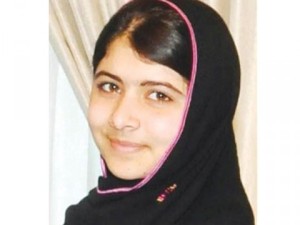Malala Yousafzai, the teenage educational activist from Pakistan has become a global figure for her bravery. But what does it mean for thousands of other girls who have to defy Taliban every waking moment for their universal right? Dhanya Nair explores the plight of education in Pakistan
[youtube height=”HEIGHT” width=”WIDTH”]http://www.youtube.com/watch?v=B5X70VyjU0g[/youtube]
Last week, 16-year-old educational campaigner Malala Yousafzai, from Swat Valley in Pakistan, gave a stirring speech in the UN underlying the importance of education especially among girls. “They thought that the bullets would silence us, but they failed. And out of that silence came thousands of voices. The terrorists thought they would change my aims and stop my ambitions. But nothing changed in my life except this: weakness, fear and hopelessness died. Strength, power and courage was born,” she said with a determined assurance. The teenager has also set $45,000 grant that will go to supporting the education of 40 girls in the Swat Valley in Pakistan.
The fund’s first grant will help to support education for the girls, aged 5 to 12, who would otherwise be forced to work to support their families or who might be at risk of entering the labor force instead of going to school. It will provide uniforms, shoes, learning materials and a stipend for their families, the statement said.
Little Malala, who was celebrating her 16th birthday, spoke eloquently in praise of educating children. “The Pen is mightier than the sword,” she stated and her speech was perhaps the sweetest revenge upon her attackers. Just days later, one of her detractors, Adnan Rasheed, a senior member of Pakistan Taliban wrote an open letter to Malala stating, “I wished it would never happened [sic] and I had advised you before.” In his letter, Rasheed claims that Malala was not targeted for her efforts to promote education, but because the Taliban believed she was running a “smearing campaign” against it.
Malala started writing about promoting education among girls at the tender age of 11 in 2009; she was shot in the head and neck in an assassination attempt by Taliban on 9 October 2012 when she was returning home on a school bus. She was seriously injured in the attack, and was flown to Britain to receive specialist treatment from doctors in Birmingham.
In most parts of the world, Malala has been hailed as a hero; a symbol of courage but in Pakistan she has been a subject of intense criticism and belligerence—the lamest one being that she is just another “drama” queen while the most imaginative one being that she is a spy. While the wagging tongues haven’t stopped; the Taliban war on girls’ education continues unabated. As Taliban sees schools as symbols of both Western decadence and government authority; it continues to exert pressure on parents and often order pious families to shun the schools.
It is of little wonder thus that Pakistan, according to the latest report from Society for the Protection of the Rights of the Child (Sparc), ranks second with the most out-of-school children in the world with only Nigeria ahead of it. The country also has the lowest youth literacy rate with 70.7% with only 61% literacy among girls as compared to 79% literacy among boys in the age group of 15-24 years.
The report also noted that 63% of children aged three to five years were not receiving any education related to early childhood development. According to the Global Gender Gap Report; the country ranks 129th among the 135 countries on the Gender Gap Index 2012.
In such a bleak scenario, Malala’s fight for education only become even more important and the only silver lining is the number of children who are continuing with education despite a siege like situation defying Taliban edicts. It is never going to be easy but they continue undeterred for the sake of education.




